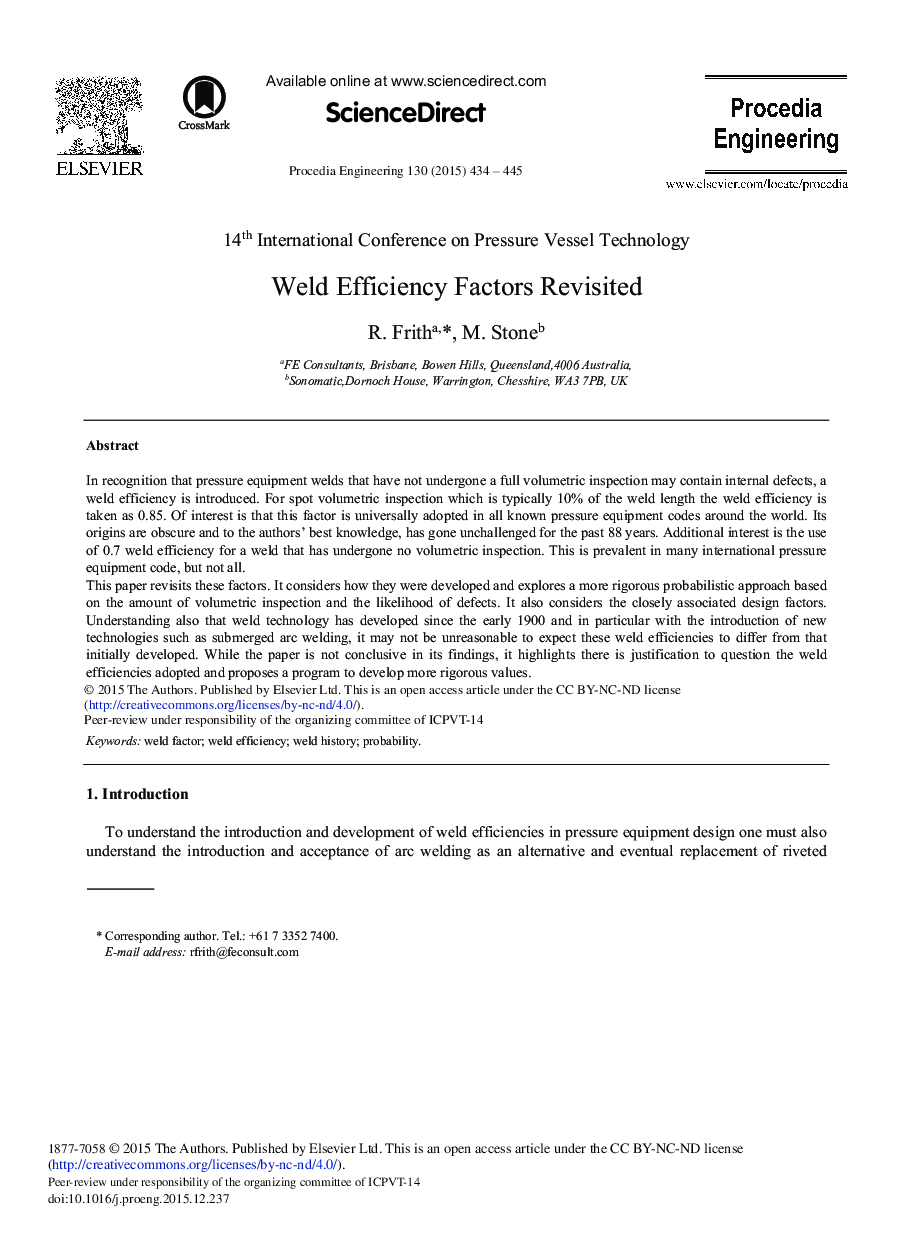| Article ID | Journal | Published Year | Pages | File Type |
|---|---|---|---|---|
| 854556 | Procedia Engineering | 2015 | 12 Pages |
In recognition that pressure equipment welds that have not undergone a full volumetric inspection may contain internal defects, a weld efficiency is introduced. For spot volumetric inspection which is typically 10% of the weld length the weld efficiency is taken as 0.85. Of interest is that this factor is universally adopted in all known pressure equipment codes around the world. Its origins are obscure and to the authors’ best knowledge, has gone unchallenged for the past 88 years. Additional interest is the use of 0.7 weld efficiency for a weld that has undergone no volumetric inspection. This is prevalent in many international pressure equipment code, but not all.This paper revisits these factors. It considers how they were developed and explores a more rigorous probabilistic approach based on the amount of volumetric inspection and the likelihood of defects. It also considers the closely associated design factors. Understanding also that weld technology has developed since the early 1900 and in particular with the introduction of new technologies such as submerged arc welding, it may not be unreasonable to expect these weld efficiencies to differ from that initially developed. While the paper is not conclusive in its findings, it highlights there is justification to question the weld efficiencies adopted and proposes a program to develop more rigorous values.
